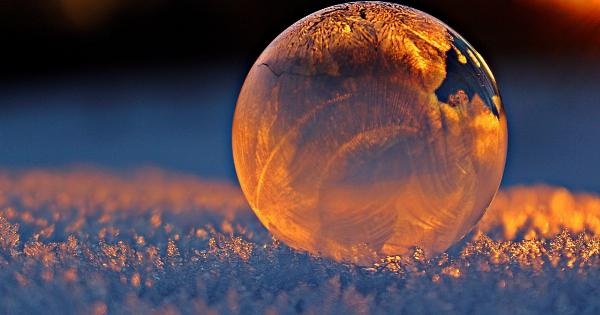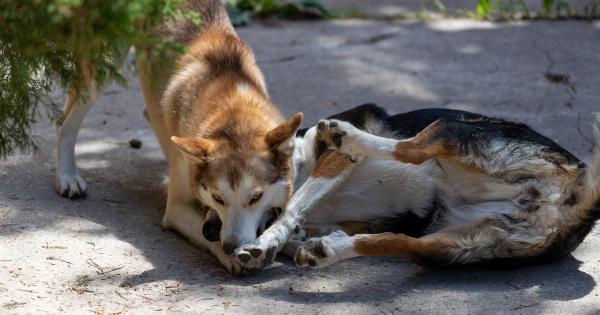As a dog owner, it’s important to not only provide a safe and loving environment for your furry friend, but also to ensure they’re not exposed to dangers within their home or outdoor space.
One potential danger that often goes overlooked is the presence of poisonous plants. Even the most well-behaved dogs can be tempted to explore their surroundings and may inadvertently ingest a toxic plant. It’s important to educate yourself on which plants can pose a danger to your dog and take steps to keep them out of reach.
Common Plants that Can Be Poisonous to Dogs
There are countless types of plants that can be toxic to dogs. It’s important to identify common plants in your area that may pose a risk to your pet, and take steps to remove them from your home or outdoor space.
Here are some of the most common plants that can be toxic to dogs:.
Azalea
Azaleas are a type of shrub that produce beautiful flowers in shades of pink, red, and white. While they may add a pop of color to your outdoor space, they can be toxic to dogs if ingested.
Symptoms of azalea poisoning in dogs include vomiting, diarrhea, and difficulty breathing. In severe cases, azalea poisoning can lead to coma or death.
Daffodil
Daffodils are a popular spring flower that can be found in many gardens throughout the country. While they may look harmless, ingesting any part of a daffodil can be toxic to dogs.
Symptoms of daffodil poisoning in dogs include vomiting, diarrhea, and abdominal pain. In severe cases, daffodil poisoning can cause convulsions, seizures, and a rapid decrease in body temperature.
Hydrangea
Hydrangeas are a popular flowering shrub that produce large, beautiful blooms in shades of pink, blue, and purple. While they may add a touch of elegance to your garden, they can be toxic to dogs if ingested.
Symptoms of hydrangea poisoning in dogs include vomiting, diarrhea, and lethargy. In severe cases, hydrangea poisoning can lead to coma or death.
Lily of the Valley
Lily of the valley is a fragrant flowering plant that is often used in bouquets and floral arrangements. While it may smell pleasant, it can be toxic to dogs if ingested.
Symptoms of lily of the valley poisoning in dogs include vomiting, diarrhea, and low blood pressure. In severe cases, lily of the valley poisoning can cause seizures, coma, and death.
Tulip
Tulips are a popular spring flower that can be found in many gardens and homes. While they may look harmless, ingesting any part of a tulip can be toxic to dogs. Symptoms of tulip poisoning in dogs include vomiting, diarrhea, and abdominal pain.
In severe cases, tulip poisoning can cause convulsions, seizures, and heart problems.
Preventing Poisonous Plant Exposure in Dogs
While it’s important to know which plants can be toxic to dogs, it’s equally important to take steps to prevent your pet from coming into contact with them. Here are some tips to help keep your dog safe from poisonous plants:.
Keep Toxic Plants Out of Reach
One of the simplest ways to prevent your dog from coming into contact with poisonous plants is to keep them out of reach.
This may mean removing plants from your home or outdoor space, or putting them on high ledges or shelves that your pet can’t reach. Keep in mind that dogs are curious creatures and may go to great lengths to get to a plant they want to investigate.
Train Your Pet to Stay Away from Plants
Teaching your dog to stay away from plants can be challenging, but it’s an important step in keeping them safe. You can start by placing a non-toxic plant in your home or yard and teaching your dog to ignore it.
If your dog shows interest in the plant, use a firm “no” or “leave it” command to deter them. Consistency is key when training your dog, so be sure to reinforce positive behavior and correct negative behavior consistently.
Schedule Regular Veterinary Appointments
Regular veterinary appointments can help ensure that your pet is healthy and free of any underlying health conditions that may make them more susceptible to plant poisoning.
Your veterinarian can also provide tips and advice on keeping your pet safe from toxic plants.
Familiarize Yourself with Local Poisonous Plants
Different regions have different types of poisonous plants that are common in the area. It’s important to familiarize yourself with local poisonous plants so that you can take steps to keep your pet safe.
Your local veterinarian or animal welfare organization can provide information on common poisonous plants in your area.
If You Suspect Plant Poisoning in Your Dog
If you suspect that your dog has ingested a toxic plant, it’s important to act fast. Contact your veterinarian immediately and provide as much information as possible about the plant in question.
Symptoms of plant poisoning can vary depending on the type of plant ingested, but commonly include vomiting, diarrhea, lethargy, and difficulty breathing. Your veterinarian may recommend inducing vomiting or administering activated charcoal to help flush the toxin from your pet’s system.
In Conclusion
Keeping your dog safe from poisonous plants requires diligence and awareness. By familiarizing yourself with the plants that are toxic to dogs and taking steps to prevent exposure, you can help ensure that your furry friend stays healthy and happy.






























